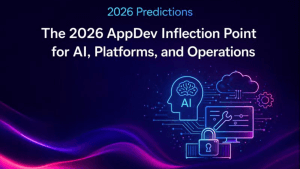The News
At Pure Accelerate 2025, Pure Storage unveiled its next-generation vision for an Enterprise Data Cloud, centered around an Intelligent Control Plane, AI-driven automation, and new service-level innovations. These announcements include platform extensions across FlashArray and FlashBlade, new SLA-based offerings like Evergreen//One for Medical Imaging, and expanded integrations for cyber resilience and cloud-native disaster recovery.
Analyst Take
The application development landscape is shifting as enterprises modernize to handle unpredictable workloads, scale-intensive data applications, and new AI-driven services. Developers are pressured to manage data across fragmented, multi-cloud environments, with regulatory and sustainability constraints. According to theCUBE Research, the future of enterprise platforms will be built around intelligent automation, observability, and self-service infrastructure. Pure’s strategy (building an Intelligent Control Plane and offering SLA-based consumption models) is a direct response to this shift, the aim of which is to provide foundational tools that let developers focus more on applications and less on backend complexity.
Pure’s Announcements Support Developer-Centric Architectures
With the introduction of an Intelligent Control Plane and expanded Fusion-driven automation, Pure is targeting developer workflows through pre-built orchestration templates, workload-specific provisioning, and a unified API layer across FlashArray and FlashBlade. The new Pure AI Copilot could offer natural language-driven insights and performance tuning. These capabilities are needed in scenarios such as AI model training, hybrid cloud DR, or multi-region orchestration, where agility and predictability are paramount. For developers working in data-heavy verticals, like healthcare imaging, financial modeling, or edge analytics, Pure’s focus on performance SLAs and storage virtualization may provide the confidence to scale securely and sustainably.
Legacy Complexity Has Historically Slowed Development
Developers have had to rely on manual storage provisioning, custom scripts for DR, and ad-hoc observability tools that increased technical debt and deployment time. The result has been slower innovation, data silos, and rising costs. In the absence of control planes that unify these workflows, engineering teams have struggled to meet the performance and compliance needs of modern digital services. We have found that developers often circumvented infrastructure constraints through external tools and workarounds, creating inconsistencies and operational risks.
Going forward, Pure’s SLA expansion, covering adaptive tiering, medical imaging, and snapshot retention, could enable developers to consume storage infrastructure similarly to how they consume cloud services: as code, policy-driven, and outcome-oriented. The Evergreen architecture, coupled with DRaaS and Rubrik/CrowdStrike integrations, may also allow developers to deploy secure, scalable environments without rearchitecting applications. This shift toward programmable infrastructure, built on predictable service guarantees, aims to empower dev teams to streamline deployment pipelines and compliance audits with confidence.
Looking Ahead
The market is moving toward intelligent, self-optimizing storage as a foundational layer for distributed applications, AI workflows, and edge deployments. Industry research forecasts that by 2026, 70% of enterprises will prioritize platform-native automation and infrastructure observability to reduce time-to-market. Pure’s emphasis on unified data governance, carbon efficiency, and multi-protocol provisioning seemingly anticipates this need and positions its platform as a critical enabler of digital transformation.
With an architecture built for scale and resilience, Pure Storage is now offering the developer community tools that could abstract away infrastructure while still meeting enterprise-grade requirements. What comes next could include tighter integrations with cloud-native platforms (Kubernetes, serverless), further extension of Fusion into data ops pipelines, and more domain-specific SLA packages across industry verticals. If Pure executes this roadmap, it could shape the blueprint for intelligent infrastructure in the age of AI-native applications.



